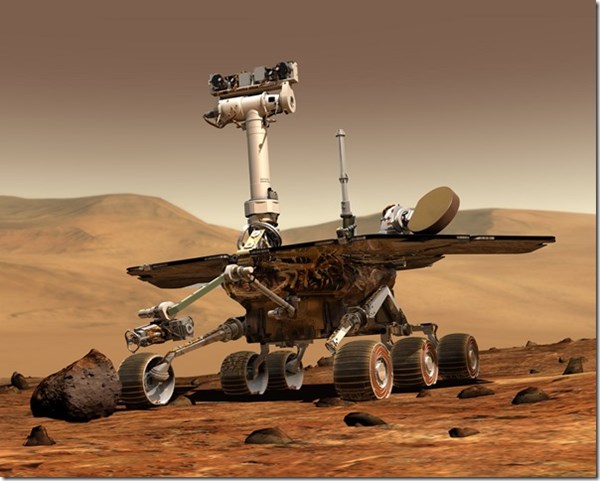Nissan, NASA and Mars
The NASA Mars Rover Opportunity landed on Mars January 25, 2004.
#electronics
The NASA Mars Rover Opportunity landed on Mars January 25, 2004. It was expected to have a three-month mission, rolling around on the Red Planet.
And it is still going.

NASA Image
Its twin, the Spirit, landed on Mars on January 3, 2004. Its last communication with Earth was on March 22, 2010.
Again, somewhat greater longevity than three months.
Clearly, NASA knows more than a little something about autonomous vehicles.
So it isn’t entirely surprising that Nissan North America and NASA are undertaking a five-year R&D partnership focused on autonomous vehicles.
Nissan researchers from its Silicon Valley Research Center will work with those at NASA’s Ames Research Center at Moffett Field, CA (which is essentially in Silicon Valley).

Among the areas of focus are autonomous drive systems, human-machine interfaces, network-enabled applications, and software analysis and verification.
They’re also looking at remote operation of autonomous vehicles, and expect to have the first vehicle ready for testing by the end of 2015.
Given that the distance between Earth and Mars is 186.8-million miles, chances are good they’re going to have this terrestrial project nailed.
RELATED CONTENT
-
On Electric Pickups, Flying Taxis, and Auto Industry Transformation
Ford goes for vertical integration, DENSO and Honeywell take to the skies, how suppliers feel about their customers, how vehicle customers feel about shopping, and insights from a software exec
-
When Automated Production Turning is the Low-Cost Option
For the right parts, or families of parts, an automated CNC turning cell is simply the least expensive way to produce high-quality parts. Here’s why.
-
Jeeps Modified for Moab
On Easter morning in Moab, Utah, when the population of that exceedingly-hard-to-get-to town in one of the most beautiful settings on Earth has more than doubled, some people won’t be hunting for Easter eggs, but will be trying to get a good look at one of the vehicles six that Jeep has prepared for real-life, fast-feedback from the assembled at the annual Easter Jeep Safari.


.jpg;width=70;height=70;mode=crop)






